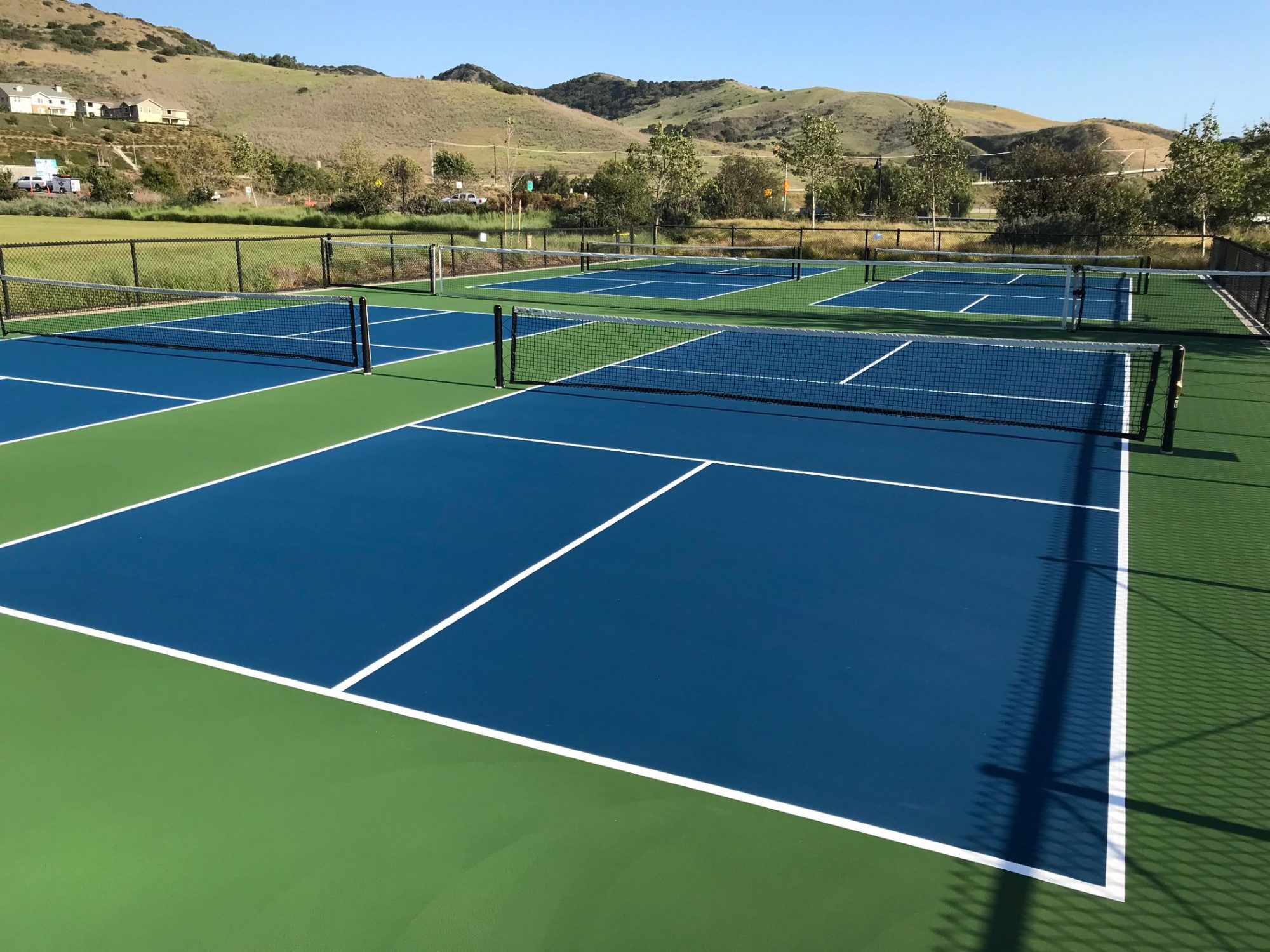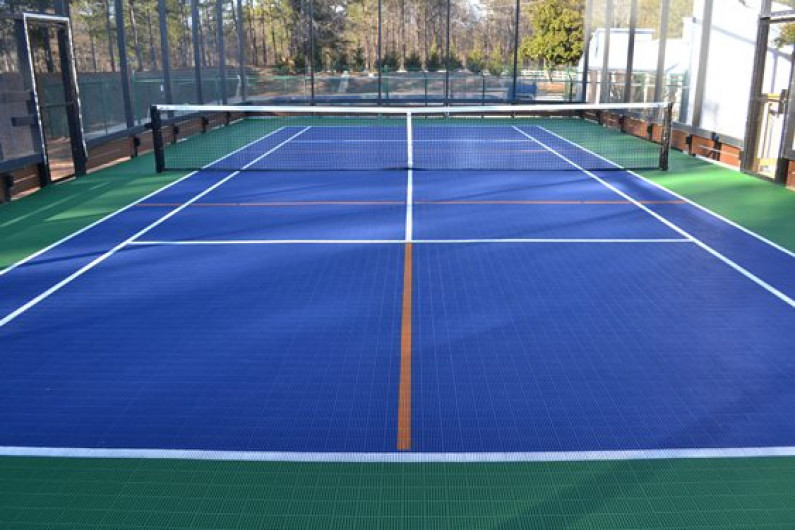Typical Mistakes to Avoid in Your Pickleball Court Construction Process
Typical Mistakes to Avoid in Your Pickleball Court Construction Process
Blog Article
Navigating Regulations for Pickleball Court Construction in Your Area
Constructing a pickleball court in your location requires a nuanced understanding of various local regulations, consisting of zoning legislations, building authorizations, and safety and security requirements. Each town enforces certain guidelines that can considerably influence the expediency of your project. Involving with regional authorities and the community is critical for making sure compliance and cultivating support. Navigating this governing landscape can be complicated and taxing. What are the essential actions you should think about to stay clear of potential challenges and guarantee a smooth building and construction process?
Recognizing Neighborhood Zoning Regulations
When taking into consideration the construction of a pickleball court, comprehending neighborhood zoning laws is important to ensuring compliance and preventing prospective lawful issues. Zoning policies dictate exactly how land can be made use of and often include specs pertaining to entertainment centers. These regulations can differ considerably by town, affecting aspects such as court positioning, dimension, lights, and sound degrees.
Prior to starting building and construction, it is necessary to speak with the regional zoning board or planning department to identify the specific policies that relate to your home. Certain areas may limit leisure activities, while others might call for certain licenses or adherence to specific standards. It is additionally important to think about obstacles, which determine exactly how much structures must be from property lines or other structures.
In addition, exclusive developments, such as house owner associations (HOAs), may enforce their own guidelines regarding the building and construction and usage of pickleball courts. Understanding these guidelines can stop costly alterations or litigation down the line. Involving with regional stakeholders and community participants can offer beneficial insights and foster assistance for your job, ensuring that it lines up with the community's requirements and expectations.
Getting Necessary Structure Permits
Just how does one navigate the intricacies of getting necessary building permits for a pickleball court? The procedure begins with understanding regional laws and needs established forth by municipal authorities. Typically, you will certainly need to submit a comprehensive website plan that lays out the recommended court measurements, materials, and format. This plan should follow zoning laws and any type of specific policies relating to entertainment facilities.

As soon as licenses are gotten, it is important to follow any examination schedules and demands throughout the construction phase. Maintaining communication with neighborhood authorities will certainly facilitate a smoother approval process and aid stay clear of potential obstacles. By extensively preparing and understanding the permitting landscape, you can effectively navigate the intricacies entailed in creating a pickleball court while continuing to be compliant with all local policies.

Assessing Environmental Impact
When preparing the building and construction of a pickleball court,A detailed assessment of environmental influence is important (Pickleball court construction). This analysis helps recognize potential impacts on neighborhood ecosystems, water sources, and neighborhood looks. Trick factors to take into consideration include website selection-- making sure that the court is not improved environmentally sensitive land, such as marshes or habitats for endangered species
Dirt security and drainage patterns ought to be assessed to stop erosion and water merging, which can adversely affect surrounding plants and wild animals. Furthermore, the option of products is crucial; going with environmentally friendly and sustainable choices lessens ecological injury.
The execution of reliable stormwater monitoring techniques is an additional vital aspect, as it helps mitigate runoff and sedimentation. Involving with neighborhood ecological firms can give beneficial understandings right into guidelines and finest methods particular to your area.
Lastly, community input can be advantageous in comprehending any local ecological problems and cultivating assistance for the job. By carrying out a complete environmental impact analysis, stakeholders can make certain that pickleball court building and construction lines up with sustainable practices and adds favorably to the neighborhood's ecological wellness.
Conforming With Security Standards
Guaranteeing conformity with safety and security requirements is critical for the successful building and construction and procedure of a pickleball court. Sticking i was reading this to established security guidelines reduces the danger of crashes and injuries, ensuring a safe and secure environment for gamers.
Key security requirements include appropriate court dimensions, surface area materials, and lights demands. The court should meet the main dimensions of 20 feet vast by 44 feet long for doubles play, with ideal buffer areas to stop injuries from wayward balls. Pickleball court construction. The surface area needs to be built from non-slip products to enhance grip and reduce the possibility of falls
Additionally, lights should suffice for night play, supplying consistent illumination to prevent darkness that can prevent exposure. Neighborhood building regulations may likewise dictate specific demands for secure fencing and internet height to guarantee player safety and security and stop unauthorized access to the court location.
Regular examinations and maintenance are necessary to maintain these criteria over time. By prioritizing safety why not try these out compliance, court owners not only protect gamers but additionally promote a favorable track record within the neighborhood. This commitment to security can urge better engagement and satisfaction of the sport, eventually adding to its growth and sustainability.

Involving the Community in Planning
Area participation in the drawing board of pickleball court construction can considerably enhance the job's overall success. Involving neighborhood citizens and stakeholders fosters a sense of ownership and motivates collective decision-making, which can bring about wider support for the campaign.
To efficiently include the neighborhood, coordinators ought to initiate public meetings or workshops, giving a platform for residents to voice their opinions and preferences pertaining to location, style, and features. Surveys and feedback forms can likewise be used to gather insights from a bigger target market, ensuring that varied viewpoints are considered.
Moreover, developing a neighborhood board of advisers can facilitate recurring discussions and address worries throughout the preparation process. This board can include reps from numerous demographics, such as neighborhood colleges, recreational organizations, and area organizations, thus magnifying neighborhood depiction.
Effective communication is essential; updates concerning the project should be routinely shared through newsletters, social media, or my company regional publications. By prioritizing area involvement, organizers can cultivate interest, reduce prospective opposition, and produce a pickleball facility that genuinely reverberates with local values and requirements. This collaborative method not just enhances the project however also reinforces neighborhood ties.
Final Thought
In conclusion, navigating the intricacies of pickleball court construction demands a detailed understanding of local policies, including zoning regulations, structure permits, and safety criteria. By adhering to these standards and promoting cooperation, successful execution of pickleball courts can be attained, promoting recreational opportunities and area health.
Building a pickleball court in your location needs a nuanced understanding of different local guidelines, including zoning legislations, building authorizations, and security requirements.When thinking about the construction of a pickleball court, understanding neighborhood zoning laws is important to guaranteeing compliance and preventing prospective lawful concerns. By thoroughly preparing and understanding the allowing landscape, you can effectively navigate the complexities entailed in creating a pickleball court while remaining compliant with all neighborhood policies.
In verdict, browsing the intricacies of pickleball court building requires a thorough understanding of local policies, including zoning legislations, building permits, and safety and security standards. By adhering to these guidelines and cultivating collaboration, effective execution of pickleball courts can be accomplished, promoting leisure opportunities and area well-being.
Report this page